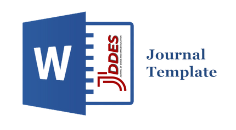IMPROVING DANCE LEARNING MOTIVATION WITH THE APPLICATION OF AUDIO VISUAL LEARNING MEDIA ONLINE (CAR in Class VII-A SMP N 2 in Simanindo Samosir, 2022)
Abstract
Keywords
Full Text:
PDFReferences
Akbar, E. (2016). Pendidikan Seni Tari Anak Usia Dini. Duta Media Publishing.
Amiruddin. (2016). Perencanaan Pembelajaran. Penerbit Parama Ilmu.
Anoegrajekti Novi, Tridjata, C., Kusumawardani, D., Nursilah, Sarah, A. B., Bangun, S. C., Hasra, H., Pekerti, W., Sudira, B. O., & Sardjono, A. (2008). Estetika. UNJ Press.
Davidson, R. N., Lynn, W., Savage, P., & Wansbrough-Jones, M. H. (1988). Chickenpox pneumonia: Experience with antiviral treatment. Thorax, 43(8), 627–630. https://doi.org/10.1136/thx.43.8.627
Hamdu, G., & Agustina, L. (2011). Pengaruh Motivasi Belajar Siswa Terhadap Pestasi Belajar Ipa Di Sekolah Dasar (Studi Kasus terhadap Siswa Kelas IV SDN Tarumanagara Kecamatan Tawang Kota Tasikmalaya). Jurnal Penelitian Pendidikan, 12(1).
Hasanudin, C. (2017). Media Pembelajaran Kajian Teoritis dan Kemanfaatan. Deepublish.
Kompri. (2015). Motivasi Pembelajaran Prespektif Guru dan Siswa. PT Remaja Rosdakarya.
Mulyani, N. (2016). Pendidikan Seni Tari Anak Usia Dini. Penerbit Gava Media.
Rochayati, R. (2017). Seni Tari Antara Ruang Dan Waktu. Jurnal Sitakara, 2(2). https://doi.org/10.31851/sitakara.v2i2.1194
Rohani. (2019). Diktat Media Pembelajaran. Fakultas Ilmu Tarbiyah Dan Keguruan Universitas Islam Negeri Sumatera Utara, 1–95.
Rustiyarso, & Wijaya, T. (2020). Panduan dan Aplikasi Penelitian Tindakan Kelas. Noktah.
Sangadah, M., & Yetti, E. (2021). Tradisional Dalam Jaringan. 2(01), 37–49.
Sardiman A.M. (1986). Interaksi dan motivasi belajar mengajar. Seni, P., Negeri, S. M. P., & Tengah, P. (2019). JURNAL. 4(2).
Suprihatin siti. (n.d.). Upaya Guru Dalam Meningkatkan Motivasi Belajar Siswa | suprihatin | PROMOSI: Jurnal Program Studi Pendidikan Ekonomi. Retrieved March 1, 2022, from https://ojs.fkip.ummetro.ac.id/index.php/ekonomi/article/view/144/115
Suryani, N. dkk. (2018). Media Pembelajaran Inovatif dan Pengembangannya. Pt. Remaja Rosdakarya.
Susanti, L. (2019). Stategi Pembelajaran Berbasis Motivasi. PT Elex Media Komputindo.
Sutrianawati. (2017). Media dan Sumber Belajar. Deepublish.
Uno, H. B. (2007). Teori Motivasi dan Penerapannya. PT Bumi Aksara.
Refbacks
- There are currently no refbacks.
Copyright (c) 2022 Universitas Pendidikan Indonesia

This work is licensed under a Creative Commons Attribution-ShareAlike 4.0 International License.



1.png)